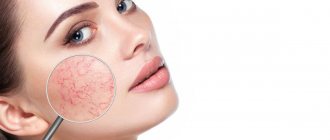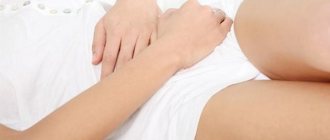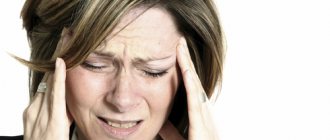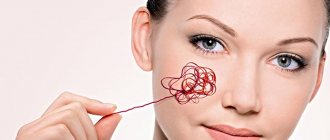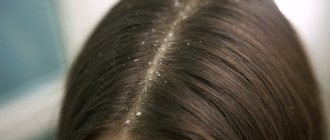What is Troxevasin
A medicine based on the angioprotective active substance troxerutin. Regulates the tone of capillary vessels and veins. It is used to eliminate pain, swelling and trophic disorders caused by their dysfunction.
Troxevasin is produced:
- in the form of an ointment for topical use: a viscous yellowish gel-like mass containing 2% troxerutin, packaged in 40 g tubes;
- in the form of capsules for oral administration: in a dosage of 300 mg of the active substance, gelatin, in blisters.
The product has a pronounced venoprotective effect. It helps reduce the permeability of vascular walls, improves blood outflow, prevents its stagnation in the lower extremities, prevents thrombus formation and the development of inflammatory processes. Troxevasin alleviates the underlying symptoms of varicose veins and slows down its progress.
Reviews about the drug
Patients and specialists leave approximately the same reviews about the two dosage forms of the drug. Most patients note the high effectiveness of the drug for bruises, hemorrhoids and varicose veins.
Doctors also note positive results in the treatment of patients with the above pathologies.
Negative reviews are most often found when patients self-medicate and want to get rid of varicose veins only with the help of Troxevasin. Relief of the symptoms of this disease is possible only with complex, competent treatment in combination with the use of other drugs, elastic compression, diet, proper daily routine and adherence to work and rest.
What is Troxevasin used for?
Medicinal ointment and capsules are prescribed:
- for chronic venous insufficiency;
- lack of nutrition of soft tissues caused by varicose veins;
- with postphlebitic syndrome;
- trophic ulcers;
- for symptoms of hemorrhoids;
- with retinopathy against the background of hypertension and diabetes.
The drug is used to prevent complications after surgical treatment of varicose veins, to prevent further vascular damage in the initial stages of pathology. Troxevasin is also indicated to improve well-being after mechanical injuries: bruises or sprains.
The active substance from the capsules is absorbed in the intestines. Its maximum concentration in the blood is observed 1.5–2 hours after administration. Metabolized by the liver and completely leaves the body within 0.5–1 day. Troxerutin from the ointment penetrates all layers of the epidermis, dermis and subcutaneous tissue within 3–5 hours.
Indications and contraindications for use
Dosage forms are prescribed in various clinical cases. Capsules are used for:
- chronic insufficiency of venous vessels;
- trophic disorders;
- postphlebitic syndrome;
- postoperative period for venectomy or sclerotherapy;
- hemorrhoids;
- combined atherosclerosis or hypertension with diabetes mellitus.
The gel has the following indications for use:
- varicose veins;
- chronic venous insufficiency;
- periphlebitis or thrombophlebitis;
- varicose dermatitis;
- injuries (bruises and sprains).
Contraindications to the administration of capsules:
- exacerbation of gastritis or ulcer of the stomach and duodenum;
- individual intolerance to components.
- CKD (may be prescribed with caution and under strict supervision and supervision of a specialist).
Contraindications to the use of the gel:
- individual hypersensitivity to components;
- violation of the integrity of the mucous membranes and skin.
When is Troxevasin contraindicated?
It is prohibited to take the drug orally:
- with exacerbations of ulcerative lesions of the gastrointestinal mucosa;
- some forms of gastritis;
- severe renal failure;
- increased sensitivity to the active or excipients of the drug.
The use of ointment should be avoided:
- if an allergic reaction to the drug develops: increased swelling, rash, severe burning or itching;
- with severe irritation, furunculosis, open skin lesions at the site of application of the product.
Pharmacodynamics
With varicose veins, the characteristics of the mucous membrane of the vessel wall are disrupted, which leads to platelet adhesion. Adherent blood cells provoke vasoconstriction, inflammation, and accumulation of blood in the veins located below. Where blood accumulates, the vessels begin to dilate. Symptoms of varicose veins appear (stars, dilated veins are visible through the skin). As the disease progresses, a disturbance in the trophism of the skin appears, which is accompanied by the appearance of ulcers.
The drug Troxevasin prevents platelets from sticking to the mucous membrane of the venous bed. The product strengthens the vein wall, making it less permeable to water. With the use of the product, swelling, pain in the legs, and inflammation go away.
How to use Troxevasin capsules
The medicine should be swallowed with water, without chewing or crushing. Meal times don't matter. At the beginning of therapy, take 1 capsule. three times a day. Diabetic retinopathy and other severe conditions require up to 1800 mg (6 capsules) per day.
The course is continued for up to 15 days. After assessing the effectiveness of the dose, the dose is adjusted. It may increase or decrease. If the symptoms of the pathology subside, at the discretion of the doctor, therapy can be completed without a maintenance period. Otherwise, Troxevasin is taken for another 3-4 weeks.
Capsules
The capsule form is indicated for the treatment of varicose veins, venous insufficiency in women, hemorrhoids, and retinopathy. Capsules are necessary for a systemic effect on the body. The medicine allows you to strengthen all venous vessels, which prevents further progression of the pathology.
Troxevasin capsules have received many positive reviews in the treatment of hemorrhoids, since this disease is associated with systemic damage to the veins. With the use of the medicine, the pathology stops progressing, nodules and cracks go away, pain and itching are relieved.
How to use Troxevasin ointment
The drug is used externally: on clean skin over the lesion. A small amount of ointment is distributed over the body area in a thin layer, lightly rubbing it in until completely absorbed. After application, you can leave the skin open or apply fixing bandages, bandages, and put on compression stockings and bandages if necessary.
The procedure for applying the medicine is repeated twice a day: in the morning and in the evening. If this is not enough, do it more often. There is no need to specifically rinse off any remaining drug before applying again. The duration of treatment with ointment is up to 7 days. If there is no result or the physical condition worsens, the medicine is discontinued and another method of therapy is chosen.
Form, composition
The drug Troxevasin contains troxerutin. It belongs to phlebotonics, venoprotectors.
For ease of use, 2 forms of the medication were created:
- Capsulated (300 mg) - a systemic drug that affects the entire body;
- Gel (2%) - applied topically;
- Troxevasin neo - gel contains not only troxerutin, but also sodium heparin and dexpanthenol.
It is advisable to use the systemic form simultaneously with the gel. This will increase the effectiveness of treatment.
Troxevasin for varicose veins
Troxevasin is an effective phlebotonic. It is prescribed for the treatment of varicose veins. The drug should be used in the form of capsules and gel at the same time. The course of treatment can last up to 3 months.
The medication relieves the symptoms of the disease well and does not cause serious complications when taken correctly (according to the instructions).
In order for the treatment to be highly effective, it is imperative to combine the medication with physical activity. Exercise therapy allows you to activate the muscles of the lower leg and thighs, which contribute to the upward movement of venous blood. Morning exercises are required.
Prolonged standing on your feet and sedentary work should be avoided. Twice a day it is recommended to lie down in a horizontal position for half an hour to relieve fatigue from the legs and relieve congestion.
Compression therapy is necessarily added to phlebotonics treatment. Products that correct blood flow include tights, stockings, and bandages of various sizes, colors, and elasticity. Compression devices do not pinch the leg and facilitate the movement of blood through the veins. Stockings and tights are practically no different from ordinary underwear. They are very easy to use and do not change their properties after washing.
Troxevasin NEO
Gel
The gel is a local remedy. It is advisable to use it for varicose veins, venous insufficiency, and retinopathy. The use of a local form is always combined with compression therapy (compression garments and bandages), as well as a systemic drug in capsules.
Patients often ask whether it is possible to apply Troxevasin for ulcers. The gel is not indicated for open ulcerative defects, as infection, local allergic reactions and inflammation are possible. For trophic ulcers, the doctor prescribes systemic antibiotic therapy, as well as a capsulated form of troxerutin.
Troxevasin gel can be used for bruises. The medication accelerates the resorption of hematomas and relieves pain.
Troxevasin gel
Troxevasin - instructions for use
The use of Troxevasin is possible both for medicinal purposes and for prevention. The drug is required for vein damage. Before using the medication, you should consult a surgeon, phlebologist, or therapist. The doctor will determine the severity of the condition and prescribe the correct therapy. Adequate treatment can prevent serious complications.
How to take Troxevasin capsules
The capsule form must be taken with meals. Troxevasin for swelling of the legs should be taken 2 capsule forms twice a day. The duration of treatment is 3-4 weeks. Then they switch to maintenance therapy at 300 mg per day for another 2 months. Treatment tactics are selected individually by the treating doctor. It is possible to take the medicine at a dosage higher than 600 mg. The use of high doses should be supervised by a doctor.
For hemorrhoids, a capsule form is recommended twice a day (600 mg). Course therapy lasts 14-28 days.
Using the gel
The gel for varicose veins of the legs and venous insufficiency should be used twice a day. The required amount of product is applied to clean skin that is free of scratches and ulcers. The medicine is rubbed in until completely absorbed. In this case, hand movements should be carried out in the direction from the foot to the thigh. After application, you need to lie on your back for 20-30 minutes, placing your feet on a pillow or cushion. This will help relieve the feeling of heaviness in your legs.
Attention! The gel is quickly absorbed and does not leave marks on clothing, so it can be applied under elastic bandages and compression garments.
The duration of therapy is up to 1-3 months. The doctor chooses the treatment tactics. If in the first 5-6 days the symptoms of the disease intensify, you should consult a doctor to adjust the therapy.
For hemorrhoids, it is recommended to apply the gel to the anal area twice a day. The drug is used additionally after each bowel movement. The duration of therapy can be up to 14-28 days.
It is possible to use the drug for scarlet fever, measles, allergies and other conditions accompanied by vascular fragility. The gel is recommended to be used simultaneously with ascorbic acid. This will enhance the effectiveness of therapy.
Which is better: Lyoton or Troxevasin
Lyoton does not allow platelets to accumulate on the vascular mucosa and increases blood fluidity. The medication is not able to strengthen the vascular wall. It is indicated for complicated varicose veins and thrombophlebitis. Troxevasin combines the properties of Lyoton gel, further increasing the permeability and strength of the vascular wall. Troxerutin is ideal for the complex treatment of varicose veins, as it has 2 forms (local and systemic).
Troxevasin is actively used in the treatment of varicose veins and hemorrhoids. Both diseases are associated with pathological dilation of the veins. You cannot independently treat diseases with ineffective drugs, including folk remedies. If symptoms of hemorrhoids and varicose veins appear, you should consult a doctor (surgeon, phlebologist, therapist, proctologist). The doctor will conduct an examination and prescribe adequate treatment. Proper therapy will help stop the development of pathology, prevent complications, and eliminate the need for surgery.
